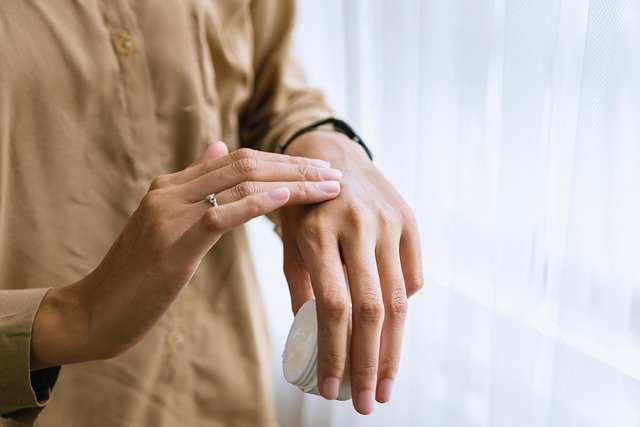Everyday Hair Care Insights
In daily routines, hair is exposed to factors such as weather, styling habits, and product use. Understanding how these elements influence texture and moisture can help people recognize the basic needs of their hair. This informational overview introduces simple care concepts, commonly discussed methods, and observations seen in everyday situations. The goal is to provide clear and neutral knowledge that supports awareness of gentle, consistent hair maintenance.

Hair care is not a one-size-fits-all practice. Each person’s hair has distinct characteristics that influence how it should be treated, from washing frequency to product selection. By paying attention to how your hair behaves throughout the day and across seasons, you can develop a routine that keeps it looking and feeling its best without unnecessary complexity or expense.
What Does Daily Texture Care Involve?
Daily texture care refers to the ongoing attention given to the specific structure and feel of your hair. Hair texture encompasses factors such as thickness, curl pattern, porosity, and elasticity. Fine hair may require lightweight products to avoid being weighed down, while coarser or curly hair often benefits from richer formulations that provide definition and control. Understanding your texture helps you choose appropriate tools and techniques, such as the type of brush or comb you use, how you dry your hair, and which styling methods work best. Regular observation of how your hair responds to different approaches allows you to refine your routine and address issues like frizz, flatness, or tangles before they become persistent problems.
How Do You Maintain Moisture and Balance?
Moisture and balance are central to hair health. Hair that lacks adequate moisture can appear dull, brittle, and prone to breakage, while over-moisturised hair may feel limp or greasy. Achieving balance involves understanding your hair’s porosity, which determines how well it absorbs and retains moisture. Low-porosity hair resists moisture absorption and may benefit from lighter, water-based products and occasional heat to open the cuticle. High-porosity hair absorbs moisture quickly but loses it just as fast, requiring heavier, sealing products to lock in hydration. Regularly conditioning your hair, using leave-in treatments when needed, and avoiding excessive heat styling all contribute to maintaining this delicate balance. Drinking enough water and eating a balanced diet also support hair moisture from within.
What Are Gentle Routine Habits?
Gentle routine habits protect hair from unnecessary stress and damage. This includes washing your hair with lukewarm rather than hot water, which can strip natural oils and cause dryness. When shampooing, focus on the scalp rather than the lengths, as the scalp produces oils that need cleansing, while the hair shaft benefits more from conditioning. Avoid vigorous towel-drying, which can cause friction and breakage; instead, gently squeeze out excess water or use a microfibre towel. Detangling should be done carefully, starting from the ends and working upward to minimise pulling and snapping. Limiting the use of heat tools, or applying a heat protectant when they are necessary, also falls under gentle care. These small adjustments accumulate over time, reducing wear and supporting healthier hair growth.
How Do You Approach Understanding Hair Changes?
Hair changes throughout life due to factors such as age, hormones, diet, stress, and environmental exposure. Recognising these changes allows you to adapt your care routine accordingly. For example, hormonal shifts during pregnancy, menopause, or puberty can alter hair texture, thickness, and growth patterns. Seasonal changes may also affect your hair, with drier winter air leading to increased static and brittleness, while summer humidity can cause frizz. Paying attention to these shifts and being willing to adjust your product choices, washing frequency, or styling methods ensures that your routine remains effective. If you notice sudden or significant changes, such as excessive shedding or scalp irritation, consulting a healthcare professional or trichologist can help identify underlying causes.
What Are Simple Care Concepts?
Simple care concepts focus on consistency and moderation rather than complexity. A basic routine typically includes regular cleansing, conditioning, and protection from damage. Choosing products suited to your hair type and concerns, rather than following trends or using multiple products at once, simplifies decision-making and reduces the risk of buildup or adverse reactions. Trimming your hair every few months helps remove split ends and maintain shape, even if you are growing it out. Protecting your hair while sleeping, such as using a silk or satin pillowcase or tying it loosely, prevents friction and tangling. Avoiding over-manipulation, such as constant styling or tight hairstyles that pull on the scalp, also supports long-term health. These straightforward practices form the foundation of effective hair care without overwhelming your schedule or budget.
Conclusion
Everyday hair care is about understanding your hair’s unique needs and responding with consistent, thoughtful habits. By focusing on texture, moisture balance, gentle handling, and adaptability, you can maintain healthy hair without relying on complicated routines or expensive products. Small, sustainable changes often yield the most lasting results, supporting both the appearance and resilience of your hair over time.



